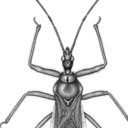Isoflurane postconditioning induces concentration- and timing-dependent neuroprotection partly mediated by the GluR2 AMPA receptor in neonatal rats after brain hypoxia-ischemia.
Ключови думи
Резюме
It has been demonstrated that preconditioning with 1.5 % isoflurane reduces hypoxia/ischemia (HI)-induced brain loss/injury in neonatal rats. Ca(2+) influx mediated by α-amino-3-hydroxy-5-methylisoxazole-4-propionic acid receptors (AMPARs) is involved in HI-induced neuronal death. Here, we investigated the effective concentrations and time windows for neuroprotection by isoflurane postconditioning in neonatal rats after brain HI and determined whether GluR2-containing AMPARs mediate this neuroprotection.
Seven-day-old Sprague-Dawley (SD) rats were randomly divided into eight groups (n = 40 in each). The rats underwent left common carotid arterial ligation (brain HI) or sham surgery, followed by exposure to 8 % oxygen for 2 h at 37 °C in a thermoregulated environment. Post-conditioning with 1, 1.5, or 2 % isoflurane for 30 min was performed immediately after brain HI. Others were post-treated with 1.5 % isoflurane for 30 min at 3, 6, and 12 h after brain HI. The weight ratio, neuronal density ratio in the ventral posteromedial thalamic nucleus, and retrosplenial granular cortex of left to right cerebral hemispheres at 7 days after brain HI were evaluated in all groups. Cerebral hemispheres were harvested for Western-blot analysis of GluR2 on the cellular membranes 24 h after HI or sham surgery in neonatal rats from the sham group, the HI group, and the HI + immediate exposure to the 1.5 % isoflurane group. In another experiment, the function of learning and memory were assessed in adolescence (4 weeks) using Morris water maze.
Compared with the control (sham) group, brain HI decreased the weight ratio and the neuronal density ratio in the ventral posteromedial thalamic nucleus and the retrosplenial granular cortex of the left to right cerebral hemispheres (p < 0.05). These effects of brain HI were reduced by postconditioning with 1.5 or 2 % isoflurane for 30 min within 6 h of HI, which coincided with the results of Morris water maze. GluR2 protein expression on cellular membranes was reduced after HI compared with sham surgery group (p < 0.05); this down-regulation was attenuated by isoflurane postconditioning.
Postconditioning with 1.5 and 2 % isoflurane affords neuroprotection in neonatal rats. The time window for isoflurane postconditioning to be effective against neonatal HI-induced brain injury was 0-6 h after HI. This protection may be mediated by GluR2-containing AMPARs.


